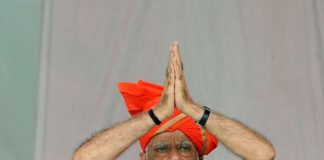NOVEMBER 9, 2019

NEW DELHI, INDIA – The Supreme Court has said that Hindus have established “a clear case of a possessory title” to the outside courtyard by virtue of “long, continued and unimpeded worship” at the Ram Chabutra and other objects of religious significance.
It has said that according to the Hindu witnesses, the Hindus used to offer prayer to the Kasauti stone pillars placed inside the mosque. “Muslim witnesses have acknowledged the presence of symbols of Hindu religious significance both inside and outside the mosque,” the SC has said.
Importantly, the SC points out that entry into the three-domed structure “was possible only by seeking access through either of the two doors on the eastern and northern sides of the outer courtyard which were under the control of the Hindu devotees”.
Based on these findings, the SC states that “on the balance of probabilities”, there is “clear evidence to indicate” that the worship by the Hindus in the outer courtyard continued “unimpeded in spite of the setting up of a grill-brick wall in 1857”.
“Their possession of the outer courtyard stands established together with the incidents attaching to their control over it,” the SC has stated.
On inner courtyard, the SC says that “there is evidence on a preponderance of probabilities to establish worship by the Hindus prior to the annexation of Oudh by the British in 1857”.
“The Muslims have offered no evidence to indicate that they were in exclusive possession of the inner structure prior to 1857 since the date of the construction in the sixteenth century.”
Courtesy/Source: Indian Express










































































































